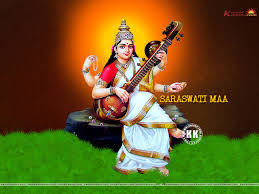Vedantasara-10.
Vedantasara-10.
2. SUPERIMPOSITION:
91. Consciousness associated with this totality is called Sutratma, Hiranyagarbha and Prana etc., because it is immanent everywhere and because it identifies itself with the five great uncompounded elements endowed with the powers of knowledge, will and activity.
92. This aggregate made up of three sheaths such as Vijnanamayakosa etc., (which forms the limiting adjunct) of Hiranyagarbha is called the subtle body as it is finer than the gross universe. It is also called the dream state, as it consists of the impressions of the waking state; and for that very reason it is known as the merging place for the gross universe.
93. Consciousness associated with each individual subtle body is known as Taijasa (full of light) on account of its being associated with the effulgent inner organ (Antahkarana).
94. The individual limiting adjunct of taijasa too, made up of the three sheaths, such as Vijnanamayakosa etc., is called the subtle body, as it is finer than the gross body. It is also called the dream state, as it consists of the impressions of the waking state, and for that very reason it is known as the merging place for the gross body.
95. The Sutratma and Taijasa, at that time, through (subtle) functionings of the mind, experience the subtle objects. Witness such Sruti passages as, “Taijasa is the enjoyer of subtle objects” (Mand. Up. 3).
96. Here also the aggregate and individual subtle bodies are identical, like a forest and its trees or like a lake and its waters, and the Sutratma and the Taijasa, which have those bodies as their limiting adjuncts, are also identical like the spaces enclosed by a forest and its trees or like the skies reflected in the lake and its waters.
97. Thus do the subtle bodies originate.
98. But the gross elements are all compounded.
99. The compounding takes place thus: Each of the five elements, viz., ether etc., is divided into two equal parts; of the ten parts thus produced five – being the first half of each element – are each sub-divided into four equal parts. Then leaving one half of each element, to the other half is added one of these quarters from each of the other four elements.
100. Thus it has been said: “By dividing each element into two equal parts, and sub-dividing the first half of each element into four equal parts, and then adding to the other half of each element one sub-division of each of the remaining four, each element becomes five in one.” )
Continues...



.jpg)
Comments